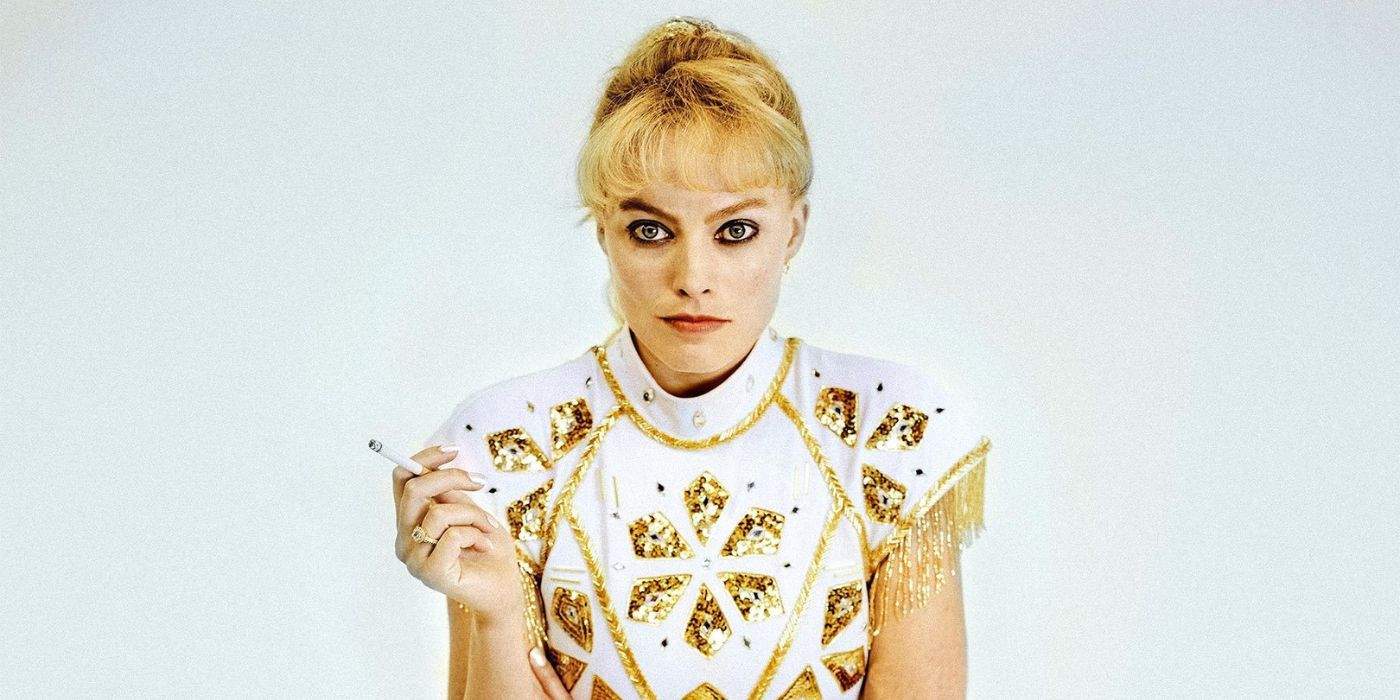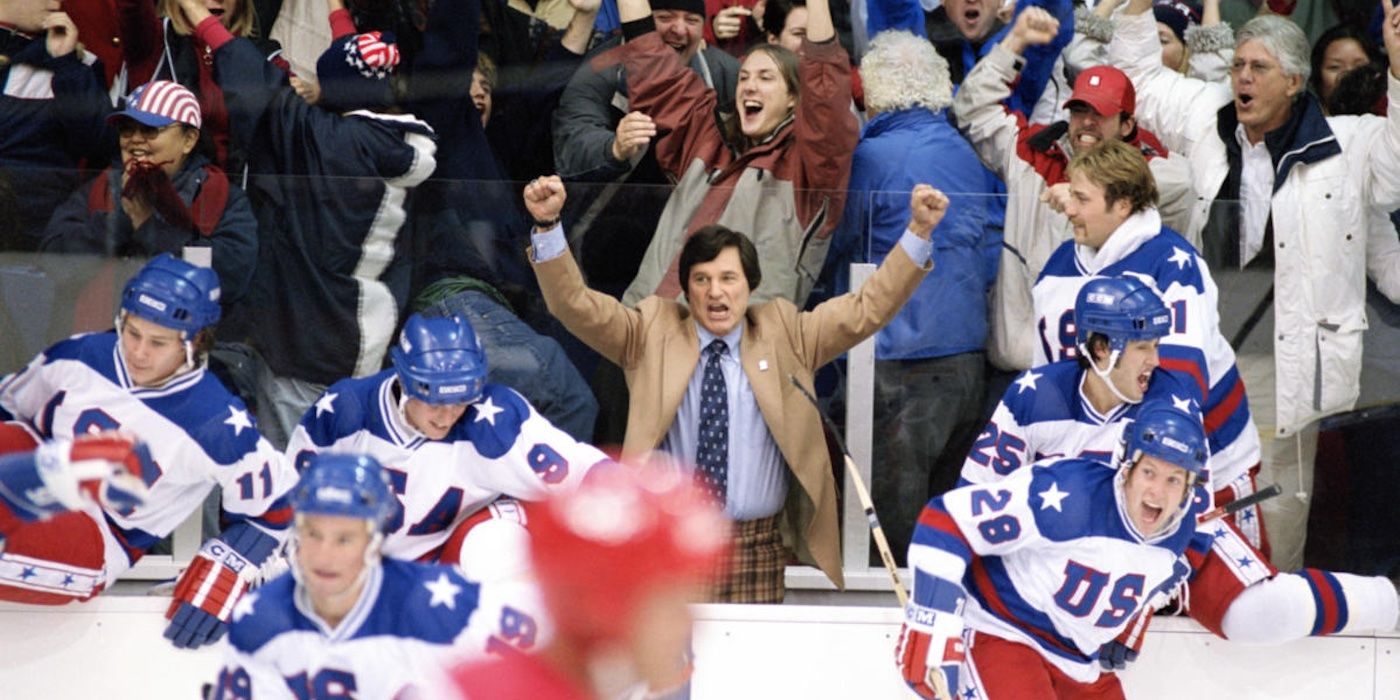The Big Picture
-
Miracle
excels in delivering a feel-good sports film based on the true story of the 1980 U.S. Men’s Hockey Team’s victory over the Soviet Union team at the Olympics. - Hall of Fame broadcaster Al Michaels praised the film for its authenticity, ensuring that even the smallest details were remarkably accurate.
- The movie was aided by former players and hockey technical advisors to recreate historical moments, including the iconic upset over the Soviet team.
If there’s one thing that a Canadian like me can appreciate, it’s hockey. And the proud history of Canadians beating the Soviet Union hockey team, so two things. While we up north have our own celebrated story of Canadians beating the USSR in 1972, knowing our neighbors down south have their own story about emerging victorious over the Soviet Union on the ice, at the height of the Cold War, is no less satisfying. And it’s that story brought to life in 2004’s Miracle, the Kurt Russell-led sports movie about coach Herb Brooks and his U.S. Men’s Hockey Team’s gold medal win over the Soviets at the 1980 Olympics. And like that historic team, the movie exceeds expectations, delivering a feel-good sports film that is one of the best of the genre… and among its most truthful.
‘Miracle’s Story Is Built on a Foundation of Truth
Hall of Fame broadcaster Al Michaels, the TV voice behind the 1980 games, recalls that when the producers of Miracle asked him to participate in the film, he agreed, but on one condition: the story had to be truthful. While a few liberties were taken, Miracle is not only accurate, but the attention given to even the smallest of details is remarkable. Michaels himself validates the film’s authenticity, saying, “[Miracle] really got back into exactly what was taking place and how it took place.”
The film begins with Brooks (Kurt Russell) interviewing with the United States Olympic Committee for the role as head coach of the national team. He discusses how he believes Team USA can beat the overwhelmingly dominant Soviet squad, winners of the gold medal in the previous four Olympics, by making changes to how the team operates and strategizes. Despite some skepticism, he is hired by the USOC. Brooks did, in fact, think outside of the box, with methods and strategies meant to assemble the team he wanted that would play the way he wanted. “We adopted more of a hybrid style of play — a bit of the Canadian school and a little bit of the European school,” Brooks would say, according to Sports Illustrated, about the change he made to the style of play. Think less Slap Shot, more The Mighty Ducks.
Off the ice, Brooks’ methods of culling the herd from 68 players at camp to 26 included a 300 question psychological test he designed personally. It was created to help weed out, in Brooks’ own words, “The ignorant people, the self-centered people, the people who don’t want to expand their thoughts,” explaining, “They’re not going to be the real good athletes.” Brooks himself was the last one cut from the 1960 team. Once the team is narrowed down to 26, Miracle moves to the team’s initial practice, where a heated fight between college rivals takes place between Rob McClanahan (Nathan West) and Jack O’Callahan (Michael Mantenuto). Only the fight never occurred, marking one of the few moments where the film strays from the true story. The scene was created as a short-cut to highlight “the animosity between the guys from Boston and the guys from Minnesota,” according to McClanahan.
‘Miracle’ Was Aided by Those Who Played the Game
With the team whittled down to 20, Miracle follows the team to an exhibition game in Oslo, where they battle Norway to a tie. Brooks, irate with the lackluster performance of his team, punishes them by putting them back on the ice for an hour-long bag skate, a particularly relentless drill that involves skating from one end of the ice to the other, repeatedly. The bag skate did happen, but the story of its inclusion in the film highlights how the filmmakers took former players’ input into making Miracle as accurate as possible. In the previously cited Pioneer Press, Jack O’Callahan tells a story about telling director Gavin O’Connor that if he wanted to know what happened off the ice, to ask him, and he would provide the answer with context. One question was about the bag skate, with O’Connor asking, “What’s this skating in the dark thing?” O’Callahan explained, and as he says, “That ended up in the movie because I told him about it. It wasn’t in the script.” Other players like Buzz Schneider, who at 25 was the oldest player on the team, and Mike Ramsey also shared details about their experience on the team with O’Connor.
It wasn’t only players on the 1980 team that contributed, however, but also players who were playing the game at the time. Cinematographer Dan Stoloff says, “We cast guys who could really skate… There are a few stunt guys in there. Some of those hits were stunt guys. But for the most part, what you see is really there.” Longtime NHL goalie Bill Ranford was brought in to perform the action scenes of U.S. goalie Jim Craig (Eddie Cahill), with Ranford confirming, in the previously cited LA Times, that the focus was on trying to make it as real as possible (Ranford played the same style as Craig). The team that brought the hockey sequences to life watched the films of the 1980 games to re-create entire sequences of play, sequences that involved full body contact and checking. Ranford even quips, “I got a cut and a concussion in the movie.” Hockey Technical Advisor Ryan Walter echoes that commitment to reality, saying, “We’re replicating history. So, Mark Johnson‘s goal at the end of the first period has to look like Mark Johnson’s goal.”
‘Miracle’ Follows Team USA to the Medal Round
Just like in real life, Miracle picks up from where Team USA goes up against the Soviet team in Madison Square Garden for an exhibition game, and, just like in real life, Team USSR defeats the American team, routing them 10-3. Worse, O’Callahan is injured, and possibly unavailable for the duration of the Olympics. Craig is told, in no uncertain terms, that he hasn’t been playing up to his best, that he’s been working too hard and fighting the puck, and the only thing left to do was to bench Craig in favor of backup Steve Janaszak (Sam Skoryna). The threat was enough to push Craig to prove Brooks wrong, saying, “You’re not giving my job away now, not now, not after six months of this crud.” In reality, Craig wasn’t the only one whose buttons were pushed by Brooks, but also Mike Eruzione (Patrick O’Brien Demsey), the team captain, who Brooks took aside and said, according to Sports Illustrated, that unless he started playing better, Brooks would tell the press that Eruzione “hurt his back” and would come to the Games as an assistant coach. The tactic not only worked on the two players, but on the team as a whole, all united by one goal: prove their coach wrong.

Related
The 10 Best Movies About Real Olympians, Ranked
These movies surely get the gold!
The team’s first game at the Olympics came against Sweden, and after the first period, Team USA is down 2-1. An irate Brooks throws a table across the room as the intermission begins, in a state of fury, and accuses McClanahan, who suffered a severe charley-horse, of giving up. The moment, as crazed as it is on film, can’t possibly compare to the reality. Per Sports Illustrated, this actually happened. At one point, Mark Johnson (Eric Peter-Kaiser) reportedly asked Eruzione to get Brooks out of the locker room. This further united the team and McClanahan plays injured, and the team comes out with a 2-2 tie with only 27 seconds remaining. They would go on to beat Czechoslovakia, Norway, Romania and West Germany to earn a spot in the medal round, against the Soviet squad.
‘Miracle’s Biggest Moment Is Also Its Most Fictional
The semi-final would pit the plucky Americans, all amateurs, against a Soviet team full of professionals, who had only lost a single Olympic game dating all the way back to 1964. This wasn’t David versus Goliath. This was an ant up against an incoming boot. As good as the American team had been, there was simply no way. But before the game begins, Brooks inspires the team with a stirring, iconic speech, now considered one of the all-time greatest. Only it didn’t happen. At least not the way it’s written in the movie. The director asked O’Callahan to remember as much of that speech as he could, as it was given behind closed doors. As O’Callahan recalls, “I wrote that speech out that they actually used in the movie. It wasn’t word for word. There were some things in there that were probably what he said and some things that were just me putting my own words in there based on my memories.” Teammates, though, would confirm that if not precise, it was certainly close enough.
Against all odds, Team USA took down the Soviet team, holding on to a 4-3 lead for the final ten minutes of the game, pulling off one of sport’s greatest upsets and earning themselves a spot in the gold medal round against Finland. It was a game they would win, but the gold medal, in life and in Miracle, is an afterthought. By beating the Soviet squad, Team USA had already won its gold medal, a true miracle on ice. That moment in the film is, actually, the most accurate thing about it. Al Michaels, per the previously cited LA Times, was asked to voice over the last 25 or 30 seconds of the game, repeating his iconic, “Do you believe in miracles? Yes!” His response: “Not over my dead body.” That line in the film is from the actual tape, capping off Miracle, a film hell-bent on making everything real, with stirring truth.
Miracle is currently available to stream on Disney+ in the U.S.
WATCH ON DISNEY+





